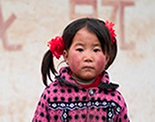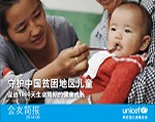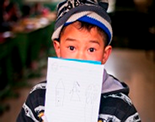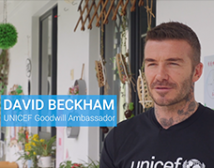
Source: Sufang Guo, Xulan Fu, Robert W Scherpbier, Yan Wang, Hong Zhou, Xiaoli Wang, David B Hipgrave, ‘Breastfeeding Rates in Central and Western China in 2010: Implications for Child and Population Health’, Bulletin, World Health Organization, 2013;91:322–331
Figure 5.6
This chart shows infant and young child feeding practices during the first two years of life in poor rural areas*. The rate of exclusive breastfeeding was only 58.3 per cent one month after delivery and declined to 29.1 per cent at four months and 13.6 per cent at six months. Except during the first month, the administration of water was the most common reason given for non-exclusive breastfeeding up to six months; intake of breastmilk substitute was the second most common reason. Around 40 per cent of newborns (aged less than one month) were given intake other than breastmilk, including water (9.4 per cent), other milk (27.1 per cent) or soft/semi-solid/solid food (3.0 per cent).
* Data are derived from a community-based cross-sectional survey conducted in 2010 on infant and young child feeding practices in 26 UNICEF project counties (total population 11 million) in 12 central and western provinces of China (Gansu, Qinghai, Jiangxi, Xinjiang, Chongqing, Sichuan, Guizhou, Guangxi, Shaanxi, Inner Mongolia, Shanxi and Tibet). Counties were selected by UNICEF and the former Ministry of Health as representative of poor rural counties based on their socio-economic development and maternal and child health performance. Child mortality was up to 65 per 1,000 live births in surveyed counties, and county GDP per capita ranged from RMB 1,000–15,000 in 2009 (compared to a national average of RMB25,000).
上一篇:Figure 5.5 Infant and young child breastfeeding and complementary feeding, 2008
下一篇:Figure 5.7 Household consumption of adequately iodized salt (20–50 parts per million), 1995–2011





























